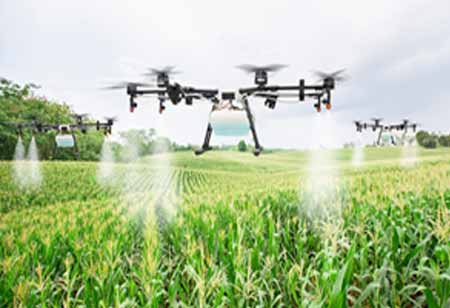Thank you for Subscribing to Agri Business Review Weekly Brief
Understanding the Essentials of Horticulture and Gardening
Horticulture and gardening represent connections between humanity and the natural world, encapsulating the art and science of cultivating plants for various purposes.

By
Agri Business Review | Friday, January 05, 2024
Stay ahead of the industry with exclusive feature stories on the top companies, expert insights and the latest news delivered straight to your inbox. Subscribe today.
Essential insights into gardening, from soil to bloom, fostering green horticulture landscapes and the art of sustainable cultivation.
FREMONT, CA: Horticulture and gardening represent connections between humanity and the natural world, encapsulating the art and science of cultivating plants for various purposes. Unlike large-scale agriculture, horticulture predominantly focuses on smaller-scale, intensive cultivation of fruits, vegetables, flowers, and ornamental plants.
Whether practised commercially in nurseries or greenhouses or on a smaller scale in the home or community gardens, horticulture encompasses diverse techniques. This dynamic field integrates traditional and cutting-edge practices, constantly evolving with the integration of new knowledge and technologies.
Principles of Horticulture
Effective plant cultivation is based on horticultural principles, which are informed by knowledge of plant requirements, propagation, disease and pest control, and harvesting methods. These concepts, rooted in scientific understanding, guide planting, upkeep, and problem-solving choices. Plants require light, water, nutrients, and an appropriate growing medium for optimum growth. The process of propagation, or the growth of new plants, can be asexual or sexual and includes techniques like grafting and seed production. A thorough understanding of plant biology is essential for successful horticulture, as it allows one to customise techniques to the unique needs of individual plant species, resulting in healthy cultivation and long-term management.
Various methods are used in horticulture, from cutting-edge approaches like hydroponics and grafting to conventional procedures like planting and watering. Pruning is a technique that improves air circulation and shapes plants, which improves their health. Pest control protects from dangers, while fertilisation provides the necessary nutrients for growth.
Grafting, the process of uniting two plants, requires knowledge and experience and has several uses, including trait combination and propagation. With its precise nutrient control system, hydroponics—a soilless production technology that uses nutrient-rich water—offers faster development and greater harvests. Hydroponic gardening, popular in both commercial and domestic settings, calls for careful monitoring of growing conditions and a thorough grasp of plant nutrition.
Technological advancements are expected to drive significant innovations in horticulture in the future. Plant monitoring and resource optimisation are improved by precision agriculture, which makes use of GPS and drones. Systems for vertical farming help cultivate crops in cities while lowering the demand for transportation.
Automation and robots, in particular, help to increase productivity by streamlining repetitive processes like planting and harvesting. Horticulture also has to deal with issues like biodiversity loss and climate change. However, with the right horticulture expertise, it can solve these problems and promote sustainability. Sustainable horticulture includes techniques like organic farming and water-wise gardening, emphasising minimising environmental effects and increasing biodiversity. This all-encompassing strategy promotes healthier communities and landscapes, which aligns with the growing environmental consciousness and the necessity of prudent resource management.
Revealing the symbiotic relationship between plants and their environments underscores the significance of sustainable practices and biodiversity in nurturing vibrant landscapes. Through this unveiling, a deeper appreciation for the transformative power of horticulture emerges, echoing the importance of cultivating gardens and a greener, more harmonious world.





